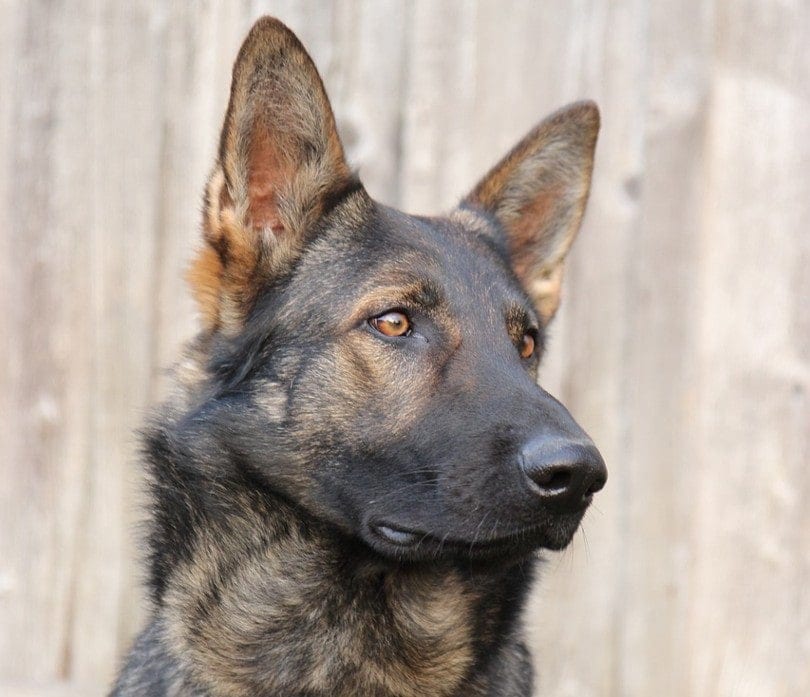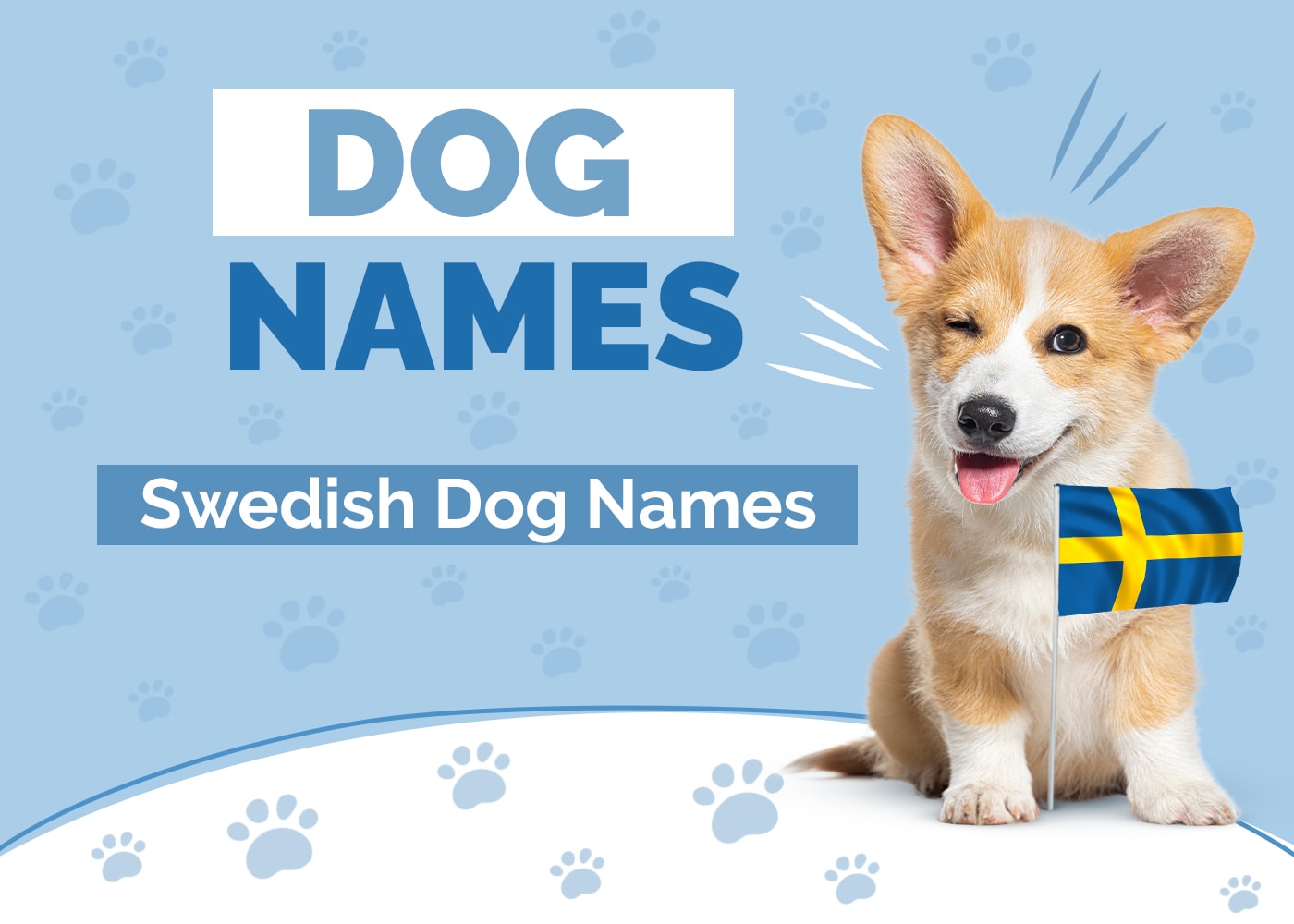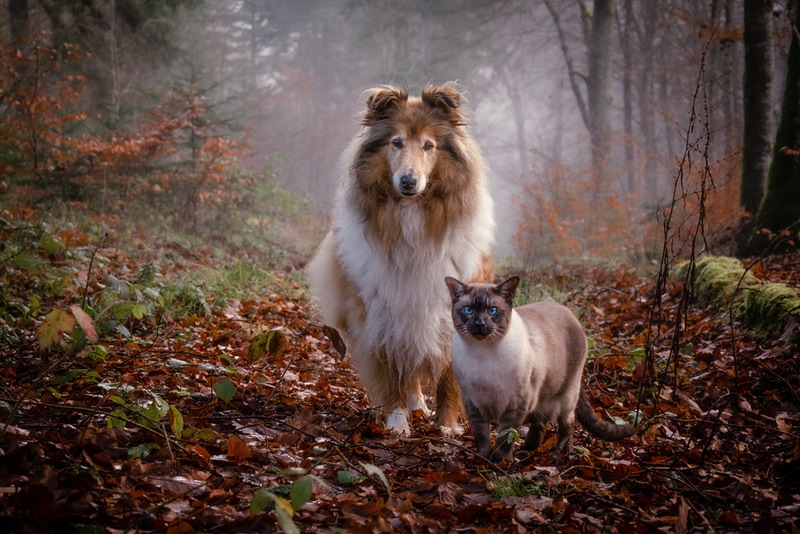How Much Do Scottish Terriers Shed? Facts, Grooming Tips & FAQ

Updated on
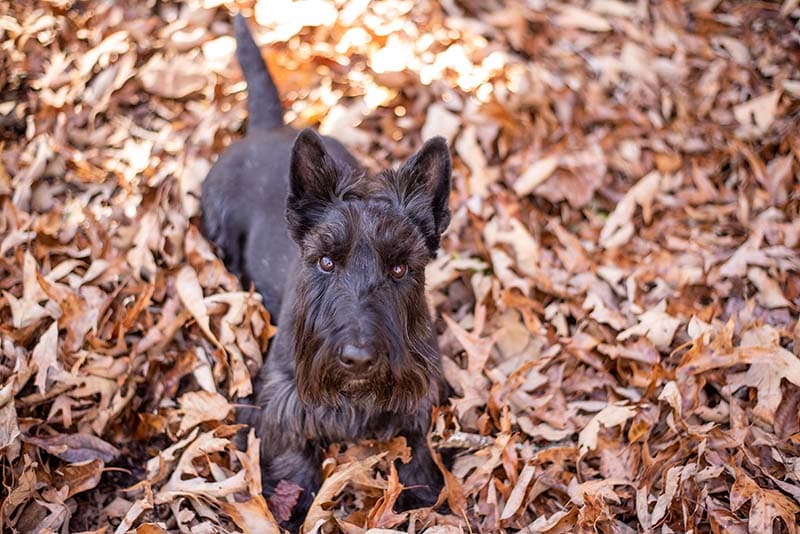
Click to Skip Ahead
Spirited, sturdily built, and loyal, Scotties are among the most popular compact dogs, and for good reason. Mostly independent, they make for near-perfect companions and have impressive hunting and watchdog skills. If you’re in the market for a faithful, capable bud, a Scottish Terrier will be a no-brainer. What about the coat, though? Good news: the Scottish Terrier is a low-shedding breed.
You will, of course, have to put extra effort into grooming to keep the pup in tip-top shape. But still, Scotland’s finest is not a high-maintenance dog. Besides, Scotties are hypoallergenic dogs. So, what does this dog’s coat look like? How do you take care of it? Can you minimize the shedding? Time to find out!
Witty, Confident, and Alert: A Quick Look at Scotties
These bright, well-tempered dogs are praised for their human-like traits and guarding and tracking talents. Originally, Scottish Terriers were bred to eliminate vermin on farms; later, they evolved into watchdogs. Aggressive around strangers (especially smaller animals), Scotties only bark when necessary and do a great job keeping intruders at bay.
The Aberdeen Terriers (a Scottish name for these pooches) are also very affectionate. They warm up to the entire family yet only create a strong bond with one lucky person. Brave, intelligent, and strong for their size, Scotties are favored by presidents (FDR, Eisenhower, and George W. Bush).
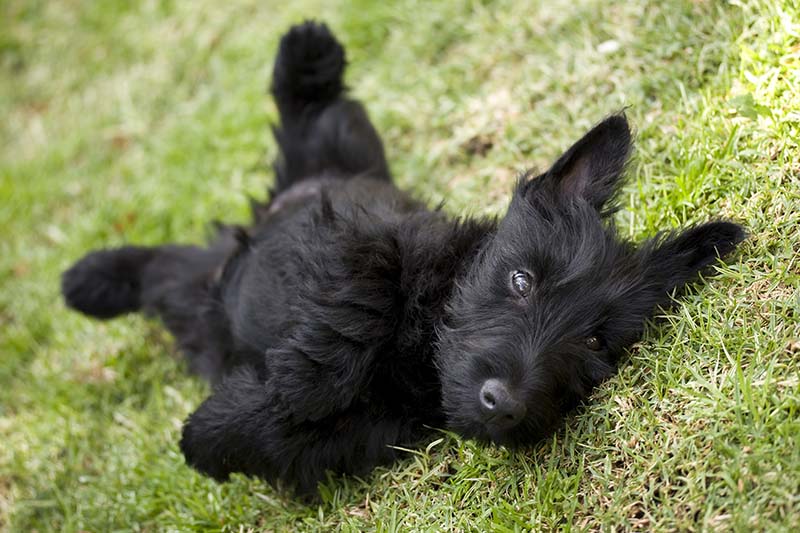
What Kind of a Coat Do Scottish Terriers Have?
Like many fellow Terriers, Scotties have a double coat. The top layer is wiry and quite dense, but the undercoat is rather soft. The dual coat helps these dogs stay comfortable and handle weather fluctuations with ease. And, while you shouldn’t leave them exposed to direct sunlight, Scottish Terriers are mildly tolerant to overheating. However, as small-bodied pups, they will benefit greatly from a sweater during cold days.
Going back to the coat, these pups have trademark furnishings on the legs, lower parts of the body, and, of course, the beard. As for the colors, we’ve got black, wheaten, and various brindle patterns (including black, red, and silver). Black is the most common color, of course, but it’s not rare for Scotties to have white or silver spots all over the coat. You won’t find any markings, though.
Are They Heavy Shedders? How Much Do Scotties Shed?
The smaller the doggo, the less fur it will have to shed: that’s a common rule. And the Scottish Terriers are a great example of that. With an average height of ten inches and a max weight of 22 pounds, this cheerful pet is a low shedder. That means you won’t ever find the entire house covered in dog hair when you return from work. Even if you skip a grooming session or two, you’ll only have to deal with minimal shedding.
Another big pro: Scottish Terriers are considered hypoallergenic and carry little to no allergens. Plus, since they are strong, independent, and not at all clingy—although they do need their fair share of love and attention—these pets rarely shed excessively due to stress or some kind of disorder. But how do you keep the coat in proper shape? Let’s talk about that next.
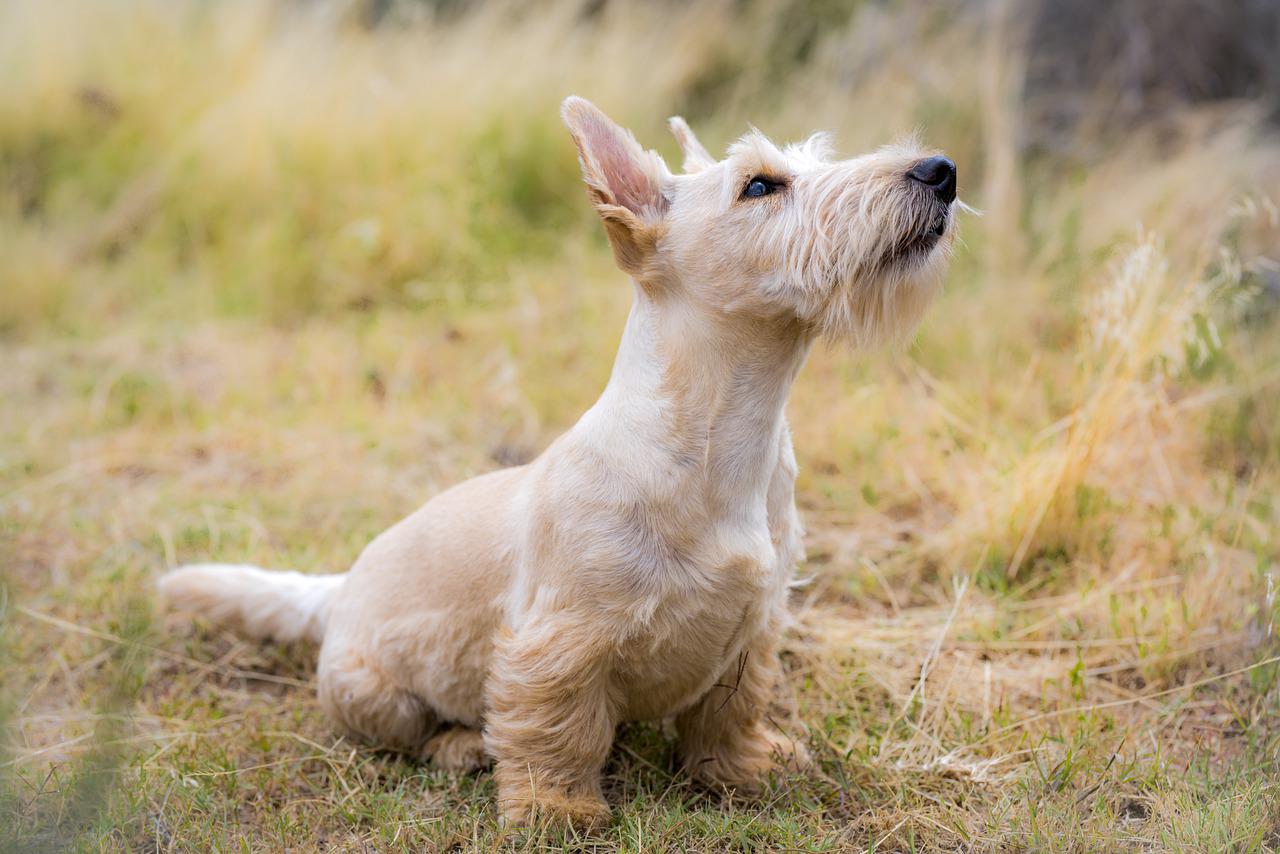
Taking Care of a Scottish Terrier’s Coat: A Quick Guide
The AKC recommends applying the hand-stripping technique to protect the topcoat (the dense layer). To achieve the best results, start the process while Scottie is a pup. This way, the doggo will become familiar with the whole process and might even develop a fondness for it. Once the fur grows long enough for you to take care of it, hand-strip it once a month or weekly, depending on the coat.
Do remember that it will take some trial and error to master this technique, though. And what about clipping—will it be a better choice for this breed? No, not quite: clipping will make short work of the top layer, making the coat way too soft. But then, you’ll only have to trim it once in 1.5–2 months. As for brushing, do it once or twice a week and use a comb to remove the dead hair, deal with the tangles, and help the skin breathe.
- Keep the dog’s skin and coat healthy
- Maintain the original color of the coat
- Keep the fur rich, dense, and lush
- Make sure the fur stays weatherproof
- A different coat texture, density, and color
- The fur will stop being weather-resistant
- A softer, fluffier fur that requires regular washing
- But you’ll have to groom it less often
Grooming a Scottie: The Basics
Bathe the Scottish Terrier occasionally, yet thoroughly, to make the coat look nice and shiny and to remove dirt/debris. The furnishings should be bathed more often; otherwise, the hair on the beard and eyebrows might break. On average, 20–30 minutes of careful grooming once a week should get the job done.
Don’t use any harsh brushes; instead, go for a soft bristle brush that will collect all the dead hair yet leave the undercoat intact. And if you have the necessary skills, you could remove the dead undercoat altogether and let the Scottie grow new, healthier fur. This process is known as carding, and, just like stripping, it requires certain skills and sleight of hand.
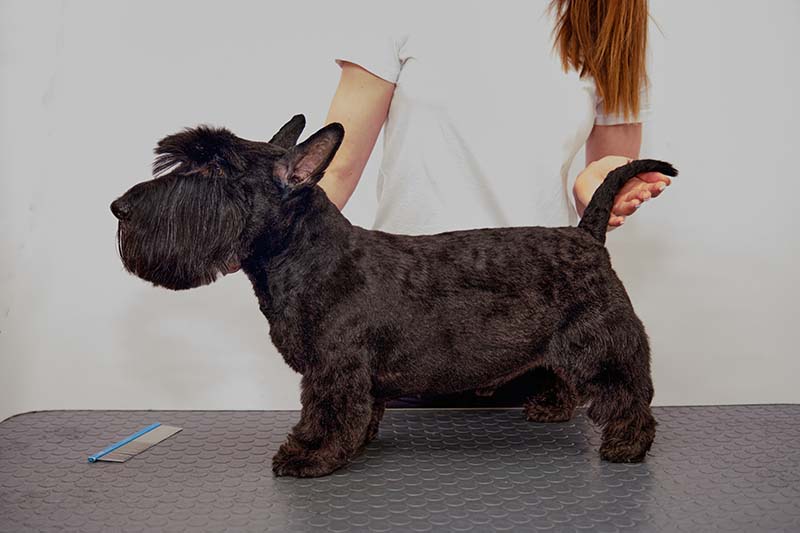
Tried-And-True Tricks for Minimizing Shedding
True, Scotties don’t shed much, but that doesn’t mean you won’t find dead hair here and there (especially on the carpet and the couch). Thankfully, there are always ways to reduce the shedding levels even further or to think ahead and protect the house from the fur.
- Come well-prepared. A slicker brush and a metal comb: that’s all you’ll need to keep the shedding under control (and a pair of hands for the stripping). A dog-specific shampoo will come in handy as well, but that’s it. You won’t have to invest in any expensive gear or care products.
- Control the pup’s diet. The rule of thumb is—the higher the quality of the food you give the pup, the stronger its skin and hair follicles will be. That, in turn, ensures less frequent shedding. So, see that the diet includes lots of protein, fats, vitamins, and minerals, along with carbs. Avoid filler ingredients.
- Hydration comes next. Are you an active dog owner who likes to spend hours with the Scottie doing fun stuff outside? Then it should always have a bowl of fresh water waiting for it right next to the bowl of food. And by saying “fresh”, we mean change it 1–2 times per 24 hours.
- Keep the dog on its feet. Scotties have tons of energy that they need to burn before hitting the sack. Make sure you have enough fun and intelligent games back home and also take it out for some regular walks, hikes, and Fetch sessions. Keep the exercises nice and short; otherwise, the dog will lose interest.
- Try to minimize stress. Scottish Terriers are highly adaptive dogs, but they might get a bit stressed when moving to a different house or getting introduced to a new four-legged friend. Allergens matter as well. Some pups are allergic to dust mites, while others can’t stand pollen.
- Keep parasites/infections at bay. Fleas and ticks are any dog’s biggest enemies. They make our fur babies itch 24/7 and lose their fur. The same goes for various infections. Regular vaccinations, grooming, and consultations with a veterinarian should help avoid this.
- Cover precious furniture. With a Scottie, you won’t be caught off-guard by a house full of dog hair. Still, if you have expensive chairs or carpets but don’t always have the time to groom/brush the pet, you could always put some slipcovers over the furniture to protect it.
Safety Rules for Scottish Terriers
Scotties are evenly-tempered, smart, and independent dogs but also somewhat stubborn. They have a strong prey drive and will chase after mice, rats, foxes, and, of course, cats. This can be avoided via early socialization. If you introduce the dog to as many two- and four-legged strangers as you can when it’s a pup, that will turn it into a friendly doggo.
Next, although Scotties are compact and incredibly cute, they aren’t recommended around little children. The reason: while friendly and happy to play with kids, Terriers aren’t known for their tolerance or patience. On the bright side, they are adaptive, playful, energetic, and learn fast. Lastly, while they can become destructive, separation anxiety is a rare thing among Scottish Terriers.
Final Thoughts
Thinking about adopting a Scottie yet worried you might not be able to handle its lush coat? It’s completely normal to be a bit nervous! Now, while these adorable pups do have a double coat, you won’t have to hire a pro groomer to brush the wiry outer layer or maintain the softer undercoat.
Ideally, you should go with hand stripping, but clipping can also work. The important thing here is to be patient, show the dog lots of love, and praise it for being a good boy/girl. Start early, let the Scottish Terrier get used to the feeling of being groomed, and use the tips from our guide to keep shedding to a minimum!
See also:
- Are Scottish Terriers Hypoallergenic? Vet-Reviewed Health Facts
- Do Scottish Terriers Bark a Lot? What to Know Before You Get One
Featured Image Credit: Tanya Consaul Photography, Shutterstock

